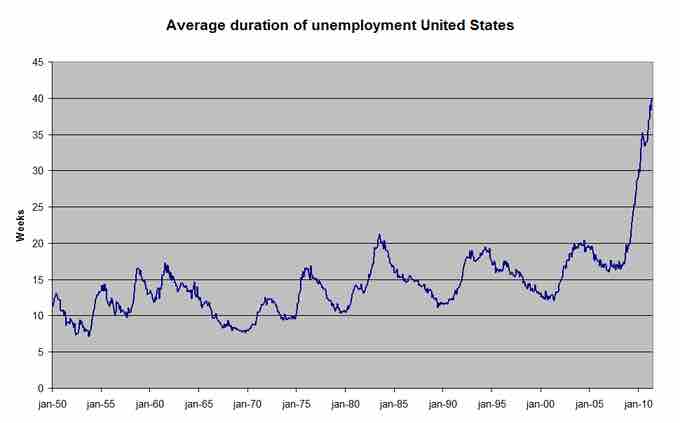Unemployment
Unemployment, also referred to as joblessness, occurs when people are without work and actively seeking employment. Generally, unemployment is high during recessions. Individuals struggle to find work when there are more job-seekers than vacant positions.
There are three types of unemployment:
- Cyclical: occurs when there is not enough aggregate demand in the economy to provide jobs for everyone who wants to work. The demand for most goods and services declines, less production is needed, and fewer workers are needed. Wages are sticky and do not fall to meet the equilibrium level which results in mass unemployment.
- Structural: occurs when the labor market is not able to provide jobs for everyone who wants to work. There is a mismatch between the skills of the workers and the skills needed for the jobs that are available.Structural unemployment is similar to frictional unemployment, but it lasts longer.
- Frictional: when a worker is searching for a job or transitioning from one job to another. Frictional unemployment is always present in an economy.
Lengths of Unemployment
Short-term unemployment is considered any unemployment period that lasts less than 27 weeks. The unemployment period is temporary and often includes the time needed to switch from one job to another. Also, if an individual is searching for employment the search period is relatively short.
Long-term unemployment is classified as unemployment that lasts for 27 weeks or longer. Being unemployed for a long period of time can have substantial impacts on individuals. Jobs skills, certifications, and qualifications lessen over time. When the job market finally increases many individuals will no longer match the requirements for the new positions. Long-term unemployment can also result in older workers taking early retirement .

Average Length of Unemployment
This graph shows the average length of unemployment in the United States from 1950-2010. Short-term unemployment is considered less than 27 weeks, while long-term unemployment is joblessness that lasts 27 weeks or longer.
Social and Individual Impacts
Unemployment can have lasting impacts of individual people as well as the economy as a whole.
- Social: Within the economy, long-term unemployment increases the inequality present in the economy and impedes long-run economic growth. Unemployment wastes resources and generates redistributive pressures and distortions within the economy. When unemployment is high, the economy is not using all of the available resources, specifically labor. Unemployment can also reduce the efficiency of the economy because unemployed workers are willing to accept employment that is below their skill level.
- Individual: For individual people, unemployment increases poverty, creates poor labor mobility, and impacts self-esteem. When individuals are unemployed they are unable to meet their financial obligations. It is not uncommon for social unrest and conflict that get worse during times of mass unemployment.